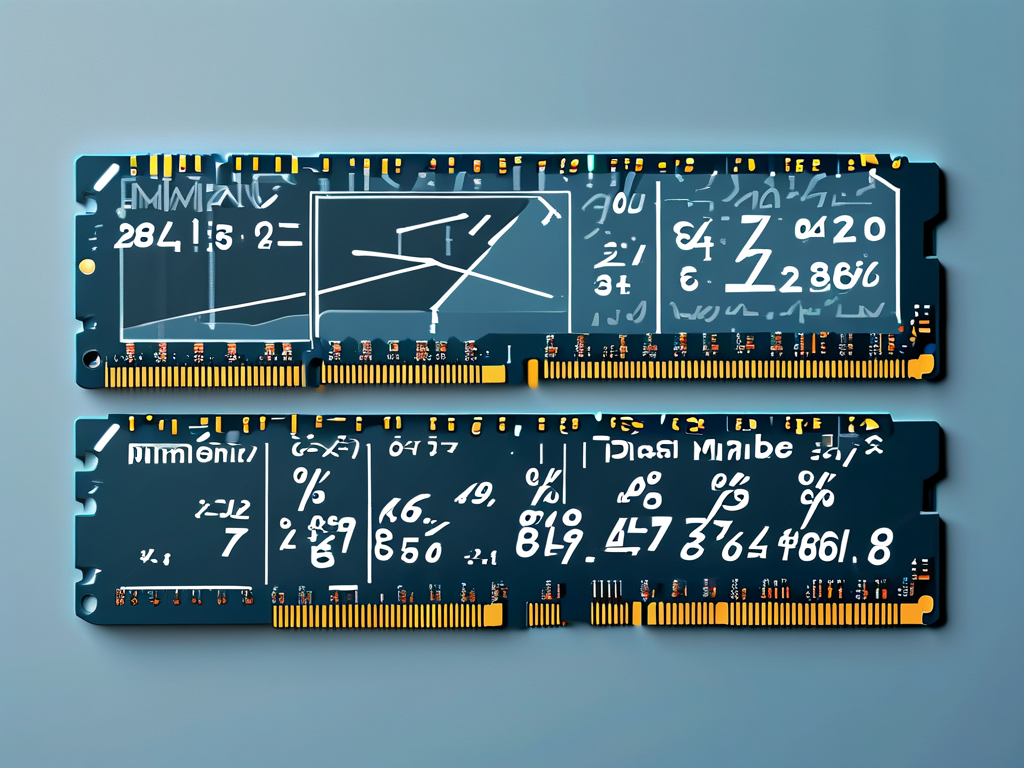Effective memory management is a cornerstone of modern operating systems (OS), ensuring optimal performance and stability. This article explores the methodologies operating systems use to calculate and allocate memory, focusing on both theoretical frameworks and practical implementations.

Memory Calculation Fundamentals
At its core, memory calculation involves tracking available resources and distributing them to processes. The OS maintains a memory map—a dynamic record of allocated and free memory blocks. This map is updated in real time as programs request or release memory. Two primary approaches dominate: static allocation and dynamic allocation.
Static allocation assigns fixed memory segments during compile time, ideal for embedded systems with predictable workloads. However, its rigidity limits scalability. Dynamic allocation, conversely, adjusts memory distribution at runtime using algorithms like first-fit, best-fit, or worst-fit. For instance, the best-fit algorithm searches for the smallest available block that meets a request, minimizing wasted space.
Paging and Segmentation
To handle fragmentation, modern OSs use paging and segmentation. Paging divides memory into fixed-size units (pages), while segmentation groups memory into logical units (segments) based on function. For example, a program might have separate code, stack, and data segments. The OS calculates memory needs by combining page tables and segment descriptors, translating virtual addresses to physical ones.
In Linux, the buddy system manages page allocation. This algorithm splits memory into power-of-two-sized blocks, merging adjacent free blocks to reduce fragmentation. When a process requests memory, the OS identifies the smallest block that fits the request, splitting larger blocks if necessary.
Virtual Memory and Swapping
Virtual memory extends physical RAM by using disk space as auxiliary storage. The OS calculates the total addressable memory as the sum of physical RAM and swap space. When RAM is exhausted, inactive pages are moved to the swap file—a process called paging out.
Windows employs a working set model to track actively used pages. The OS periodically evaluates which pages to retain in RAM based on recent access patterns. This calculation balances performance and resource utilization, ensuring frequently accessed data stays in fast memory.
Memory Overcommitment and Limits
Some systems, like Linux, allow memory overcommitment—approving requests exceeding available physical and swap space. This optimistic approach relies on the assumption that not all processes will use their allocated memory simultaneously. The OS calculates risk using heuristics, but misjudgments can lead to out-of-memory (OOM) errors.
To mitigate this, administrators set cgroups (control groups) or ulimit thresholds. These enforce hard or soft limits on per-process memory usage. For example, a database server might be capped at 8 GB to prevent resource starvation in multi-tenant environments.
Real-Time Systems and Predictability
Real-time operating systems (RTOS) prioritize deterministic memory calculations. They avoid dynamic allocation during critical tasks to prevent delays from garbage collection or heap fragmentation. Instead, pre-allocated memory pools are used, with the OS reserving fixed blocks for specific functions.
Debugging and Optimization Tools
Developers rely on tools like Valgrind or Windows Performance Analyzer to audit memory usage. These utilities intercept allocation requests, flagging leaks or inefficiencies. For instance, Valgrind’s memcheck tool tracks uninitialized data or improper deallocations, helping refine memory calculations.
Operating systems employ layered strategies to calculate and manage memory, blending algorithmic precision with adaptive policies. From paging to cgroups, these methods ensure efficient resource use across diverse workloads. As applications grow in complexity, advancements in memory calculation—such as machine learning-driven allocation—will continue to shape OS design.









